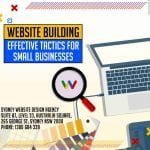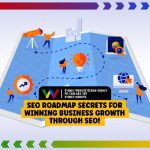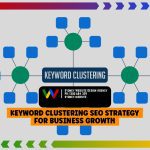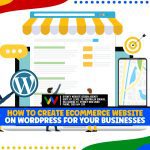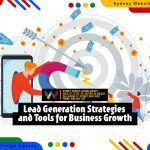There are a variety of reasons why small businesses struggle with advertising. Some small business owners worry that they don’t have enough money for advertising, or that their digital marketing efforts won’t be enough. Others are afraid that the competition will see their ads and steal their customers. Finally, some business owners simply don’t know how to create good advertisements or even create a simple email marketing letter
Learning how to create an advertising strategy for your small business can be tricky, especially if you’re more experienced with the product or service than marketing. If you don’t know how to create an effective advertising strategy, however, you’re not going to get very far in your business – and eventually, you’ll find that it’s not as successful as you hoped it would be.
Introduction
Advertising is a critical part of any small business. Without an effective advertising strategy, it can be difficult for a small business to succeed.Propelling a small business to success often depends on having an effective advertising strategy in place. Advertising is one of the most important facets of any marketing plan, and it can be used to reach a wide range of customers. There are a variety of advertising tactics that can be used to target different markets, and it’s critical to choose the right ones for your business.It’s crucial for businesses to remember that no one marketing strategy will work for everyone. They need to tailor their strategies according to their existing customers, potential customers, and the products or services they offer. With the right mix of advertising tactics, businesses can create successful campaigns that will help propel them to success.
Table of Contents
- What is an Advertising Strategy?
- Is an Advertising Strategy Different from an Advertising Tactic?
- 7 Effective Advertising Techniques
- What Makes an Advertising Campaign Effective
- Choosing the Right Advertising Tactics
- Measuring Advertising Effectiveness
- FAQs for Advertising Strategy for Small Business
- Targeting Different Markets with Tailored Advertising Strategies
What is an Advertising Strategy?
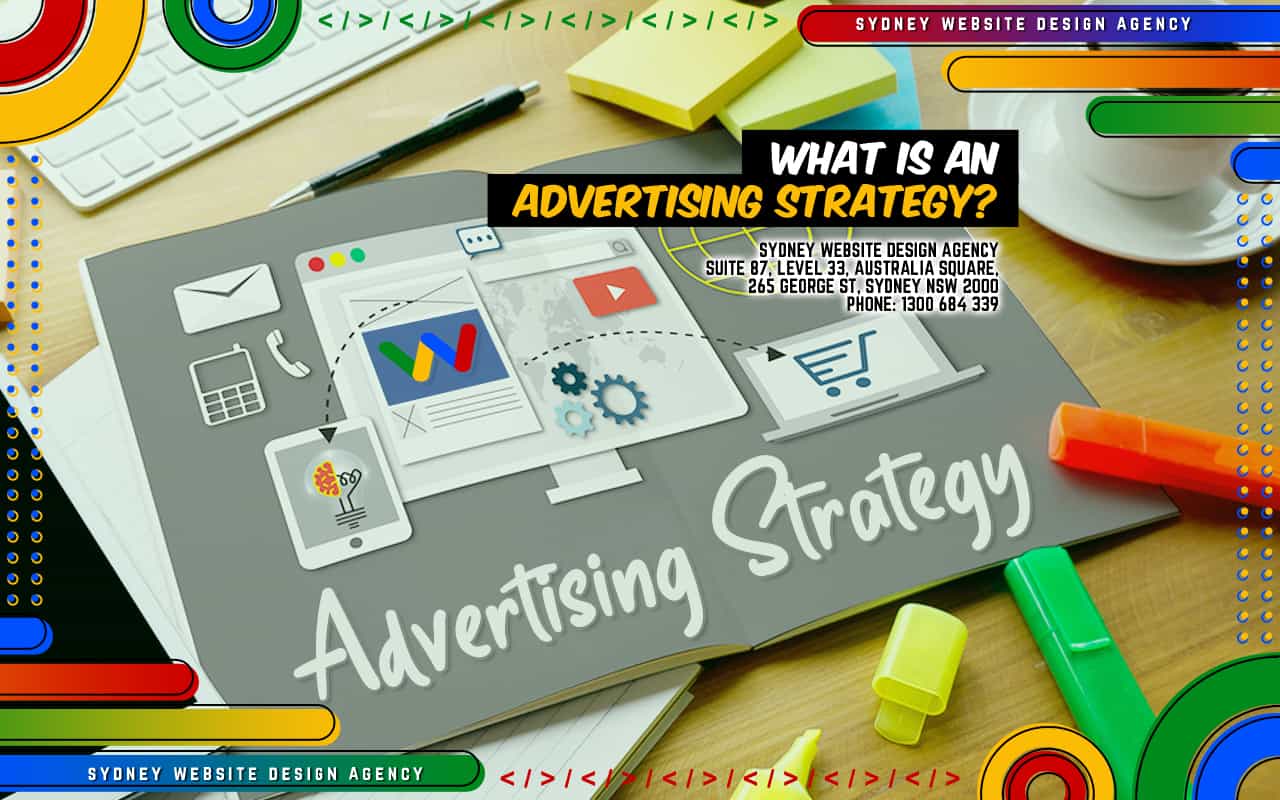
An advertising strategy is a plan of action designed to achieve a specific goal. For small businesses, this goal is usually to increase brand awareness or sales. To create an effective advertising strategy, you need to understand your potential customers, your product, or service, and your competition.
Once you have a good understanding of these things, you can start to develop a plan that will help you achieve your goals. Keep in mind that an effective advertising strategy for small businesses takes time and effort to develop – it’s not something that you can just put together overnight. However, if you take the time to create a well-thought-out plan, it will be worth it in the end.
Creating a blog about advertising strategies for small businesses is a great way to help other entrepreneurs, but it can also be used to improve your own business. . By following these steps, you’ll be able to advertise your business to people who are interested in reading about marketing strategies that work for small businesses, while also drawing in new customers through the content on your blog.
Is an Advertising Strategy Different from an Advertising Tactic?

Yes, an advertising strategy is different from an advertising tactic. An advertising tactic is a specific action that you take to achieve your goal. For example, if your goal is to increase brand awareness, an advertising tactic would be to create a TV commercial or place ads in newspapers and magazines.
An advertising strategy, on the other hand, is a long-term plan that includes multiple tactics. So, if you want to increase brand awareness, your advertising strategy might include creating a TV commercial, placing ads in newspapers and magazines, and developing a social media marketing campaign. As you can see, an advertising strategy is much more comprehensive than an individual tactic.
As we mentioned before, small businesses need an advertising strategy to be successful. There are a few reasons for this. First, an advertising strategy will help you focus your efforts and ensure that you’re using your resources in the most effective way possible.
Second, an advertising strategy will help you track your progress and measure your success. Without a strategy, it’s easy to get lost in the shuffle and lose sight of your goals. Finally, an advertising strategy will give you a road map to follow as you implement your tactics. This road map will keep you on track and help you avoid making common mistakes.
7 Effective Advertising Techniques

It’s not what it used to be. The days of placing advertisements in the local newspaper or knocking on doors to get consumers interested in your goods are long gone.
Advertising has recently shifted to the internet. It’s not enough to just inform local people about your goods. If you want to beat out the competition, you must start reaching out to individuals from across the country or around the world with information regarding your products and services.
If you’re new to advertising or are simply looking for different ways to mix things up, we’ve got you covered. We’ll show you some of the most popular ad tactics to get your items in front of your target demographic in this article. You’ll see an increase in sales and a boost to your bottom line if these strategies are used correctly.
With the right formula for your brand, you will eventually find the right strategy that will generate sales and positive results for your business.
1. Focus on What Makes Your Audiences Feel Good
It’s easy to capture people’s attention and persuade them to buy a product or service. Creating an advertising campaign—whether in local ads, print, or as a video you can upload on social media—is a fantastic method to tug at emotions. It also aids your company in developing a narrative and expressing principles in an entertaining and charming way.
When advertising, focus on what your target demographic wants and how you can make them feel good about doing business with you. Do they want to be seen as trendsetters? As environmentally conscious consumers? As people who support local businesses? Telling a story that resonates with your ideal customer will result in higher engagement levels and conversions.
2. Concentrate on Quality Over Quantity
You might have heard that it’s essential to post often on social media or create new blog content frequently to maintain a high search engine ranking. While there is some truth to this—search engines do favour fresh content—it’s more important to focus on quality than quantity.
If you’re regularly churning out low-quality content, you’re not doing your business any favours. It’s much better to post fewer pieces of high-quality content than to flood the internet with subpar writing, videos, or photos.
To create quality content, brainstorm ideas that will be genuinely interesting and helpful to your existing customers and target market. Then, take the time to produce well-written articles or videos with valuable information. By investing in quality content, you’ll see a higher return on investment for your advertising efforts.
3. Make Use of Different Types of Media
The traditional method of advertising was through print media—newspapers, flyers, and magazines. However, there are now many types of media you can use to reach your target audience. In addition to print ads, you can utilise television, radio, the internet, and even smartphone apps.
Consider combining search engine optimisation with your social media strategy, email marketing, and content marketing campaigns. A mix of these can create an effective campaign most valuable for your business. Build high-quality backlinks to earn more organic traffic to your website and to appear in the first pages of search results.
With so many types of media available, it can be tough to know where to start. The best method is to experiment with different types of advertising and see which ones work best for your company. You may find that a combination of several types of media is most effective in reaching your target customer.
4. Don’t Be Afraid to Spend Some Money
Advertising can be costly, especially for a small business owner, but it’s essential to remember that it’s an investment. And like any other investment, there’s always some risk involved. However, if you’re strategic about how you spend your money on advertising, you can minimise the risks and maximise the rewards.
When budgeting for your advertising campaign, don’t be afraid to spend a little bit more than your original marketing budget. It’s better to overspend and reach your potential customers than to skimp on your ad budget and fail to connect with the people you want to sell to. A marketing strategy involves cost, it is up to your ad’s manager to spend this amount wisely.
5. Provide Incentives
One of the most effective methods of advertising is offering incentives. This could take the form of discounts, free shipping, or even prizes. By providing an incentive, you’re more likely to capture people’s attention and persuade them to buy from you.
You can consider starting affiliate marketing campaigns, offer discounts for bulk purchases or special offers for your local websites. You can start with publishing discount codes on coupon deal sites and social media apps.
Of course, it’s essential not to go overboard with incentives. You don’t want to lose money by giving away too much in discounts or freebies. Instead, focus on providing modest incentives that will still be appealing to your target audience.
6. Prove Your Worth with Case Studies and Testimonials
When advertising your business, it’s not enough to simply tell people that you’re the best. You need to provide proof. Case studies and testimonials from happy customers are an excellent way to do this. The key to creating loyal customers is to communicate with your potential customers how trustworthy your brand is.
If you have any case studies or testimonials, be sure to showcase them prominently on your website and social media accounts. If you don’t have any yet, consider reaching out to some of your satisfied customers and asking if they would be willing to write a review or case study.
7. Test, Test, Test
The only way to know for sure what works and what doesn’t is to test different methods of advertising. Try out different types of ads in different media and see how they perform. Over time, you’ll develop a feel for which types of ads are most effective in reaching your target audience.
It’s also essential to test different offers and incentives. See how your target audience responds to different deals and discounts. By testing different elements of your advertising campaign, you can fine-tune it and make it as effective as possible.
Advertising can be a challenging process, but it doesn’t have to be complicated. By following these simple tips, you can develop an effective advertising strategy that will help your small business succeed.
What Makes an Advertising Campaign Effective

It’s not what it used to be. The days of placing advertisements in the local newspaper or knocking on doors to get consumers interested in your goods are long gone.
Advertising has recently shifted to the internet. It’s not enough to just inform local people about your goods. If you want to beat out the competition, you must start reaching out to individuals from across the country or around the world with information regarding your products and services.
If you’re new to advertising or are simply looking for different ways to mix things up, we’ve got you covered. We’ll show you some of the most popular ad tactics to get your items in front of your target demographic in this article. You’ll see an increase in sales and a boost to your bottom line if these strategies are used correctly.
With the right formula for your brand, you will eventually find the right strategy that will generate sales and positive results for your business.
1. Focus on What Makes Your Audiences Feel Good
It’s easy to capture people’s attention and persuade them to buy a product or service. Creating an advertising campaign—whether in local ads, print, or as a video you can upload on social media—is a fantastic method to tug at emotions. It also aids your company in developing a narrative and expressing principles in an entertaining and charming way.
When advertising, focus on what your target demographic wants and how you can make them feel good about doing business with you. Do they want to be seen as trendsetters? As environmentally conscious consumers? As people who support local businesses? Telling a story that resonates with your ideal customer will result in higher engagement levels and conversions.
2. Concentrate on Quality Over Quantity
You might have heard that it’s essential to post often on social media or create new blog content frequently to maintain a high search engine ranking. While there is some truth to this—search engines do favour fresh content—it’s more important to focus on quality than quantity.
If you’re regularly churning out low-quality content, you’re not doing your business any favours. It’s much better to post fewer pieces of high-quality content than to flood the internet with subpar writing, videos, or photos.
To create quality content, brainstorm ideas that will be genuinely interesting and helpful to your existing customers and target market. Then, take the time to produce well-written articles or videos with valuable information. By investing in quality content, you’ll see a higher return on investment for your advertising efforts.
3. Make Use of Different Types of Media
The traditional method of advertising was through print media—newspapers, flyers, and magazines. However, there are now many types of media you can use to reach your target audience. In addition to print ads, you can utilise television, radio, the internet, and even smartphone apps.
Consider combining search engine optimisation with your social media strategy, email marketing, and content marketing campaigns. A mix of these can create an effective campaign most valuable for your business. Build high-quality backlinks to earn more organic traffic to your website and to appear in the first pages of search results.
With so many types of media available, it can be tough to know where to start. The best method is to experiment with different types of advertising and see which ones work best for your company. You may find that a combination of several types of media is most effective in reaching your target customer.
4. Don’t Be Afraid to Spend Some Money
Advertising can be costly, especially for a small business owner, but it’s essential to remember that it’s an investment. And like any other investment, there’s always some risk involved. However, if you’re strategic about how you spend your money on advertising, you can minimise the risks and maximise the rewards.
When budgeting for your advertising campaign, don’t be afraid to spend a little bit more than your original marketing budget. It’s better to overspend and reach your potential customers than to skimp on your ad budget and fail to connect with the people you want to sell to. A marketing strategy involves cost, it is up to your ad’s manager to spend this amount wisely.
5. Provide Incentives
One of the most effective methods of advertising is offering incentives. This could take the form of discounts, free shipping, or even prizes. By providing an incentive, you’re more likely to capture people’s attention and persuade them to buy from you.
You can consider starting affiliate marketing campaigns, offer discounts for bulk purchases or special offers for your local websites. You can start with publishing discount codes on coupon deal sites and social media apps.
Of course, it’s essential not to go overboard with incentives. You don’t want to lose money by giving away too much in discounts or freebies. Instead, focus on providing modest incentives that will still be appealing to your target audience.
6. Prove Your Worth with Case Studies and Testimonials
When advertising your business, it’s not enough to simply tell people that you’re the best. You need to provide proof. Case studies and testimonials from happy customers are an excellent way to do this. The key to creating loyal customers is to communicate with your potential customers how trustworthy your brand is.
If you have any case studies or testimonials, be sure to showcase them prominently on your website and social media accounts. If you don’t have any yet, consider reaching out to some of your satisfied customers and asking if they would be willing to write a review or case study.
7. Test, Test, Test
The only way to know for sure what works and what doesn’t is to test different methods of advertising. Try out different types of ads in different media and see how they perform. Over time, you’ll develop a feel for which types of ads are most effective in reaching your target audience.
It’s also essential to test different offers and incentives. See how your target audience responds to different deals and discounts. By testing different elements of your advertising campaign, you can fine-tune it and make it as effective as possible.
Advertising can be a challenging process, but it doesn’t have to be complicated. By following these simple tips, you can develop an effective advertising strategy that will help your small business succeed.
Choosing the Right Advertising Tactics

As a small business owner, you may be asking yourself what are the most effective advertising strategies that can propel your business to success. You may have a limited budget for marketing and advertising, so it is important to make sure that you are using the right tactics to get the most bang for your buck.
Here are some tips on choosing the proper advertising tactics for your small business:
1. Know Your Target Audience
The first step in choosing the proper advertising strategy is to know your target audience. Who are you trying to reach with your marketing and advertising? Once you know who your target audience is, you can better select the tactics that will reach them.
2. Consider Your Budget
Another influential factor to consider when choosing advertising tactics is your budget. You want to make sure that you are not overspending on your marketing and advertising efforts. Instead, focus on using tactics that are within your budget and will still allow you to reach your target audience.
3. Select the Right Channels
Once you know who your target audience is and how much you can afford to spend on marketing and advertising, it is time to select the right channels. There are many channels that you can use to reach your target audience, so it is indispensable to select the ones that will work best for your business. Some popular channels include television, radio, print, online, and word-of-mouth.
4. Evaluate Your Results
After you have implemented your advertising tactics, it is important to evaluate the results. This will help you determine which tactics are working and which ones need to be tweaked. By evaluating your results, you can fine-tune your advertising strategy and ensure that you are using the most effective tactics possible.
Following these tips will help you choose the right advertising tactics for your small business. Remember, it is critical to know your target audience, consider your budget, select the correct channels, and evaluate your results to create an effective advertising strategy. With a little planning and effort, you can create an advertising strategy that will help your small business succeed.
Measuring Advertising Effectiveness
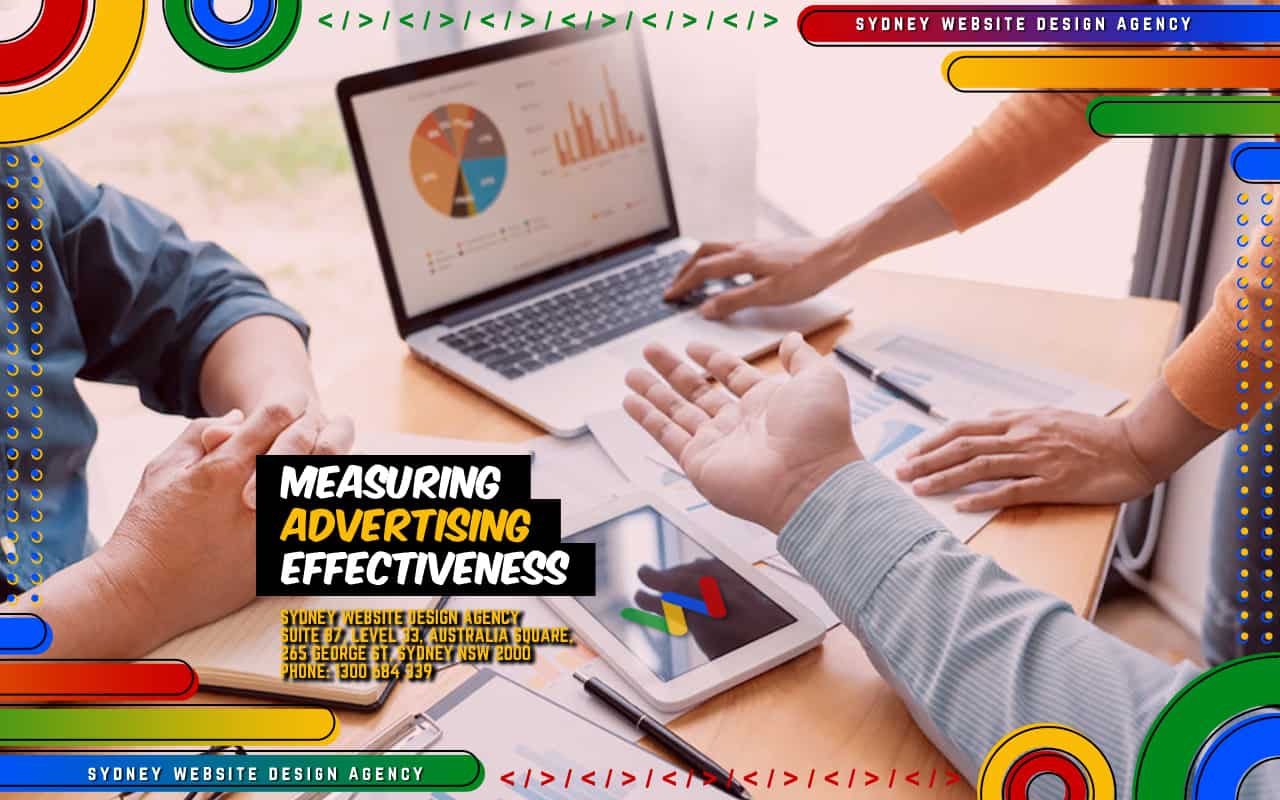
The success of a firm’s marketing is measured by how effectively it increases revenue without increasing costs of acquisition. You’ll always win in the end if your marketing consistently lowers the cost of acquiring and keeping customers, while also increasing the value of their business.
Outcomes can be difficult to measure, but there are certain indicators you can use to track progress. Metrics, benchmarks, and key performance indicators must all be in place to show marketing effectiveness.
Outbound Marketing Effectiveness
In the past, the only way to reach customers was through outbound marketing, making tracking marketing success difficult. These strategies were a waste of money. The impact of marketing techniques on income and client acquisition expenses was practically impossible to estimate.
Spending a considerable sum of marketing money on TV, radio, print, magazine advertising, and billboards was all in an effort to carpet-bomb their market with product messaging and branding information.
They could not determine which strategy worked best because effectiveness was largely based on assumptions.
Digital Marketing Effectiveness
It’s never been easier to calculate the effectiveness of your marketing. How successful your brand is when it comes to digital marketing is measured through the help of the brand’s inbound marketing success.
Inbound marketing enables companies to establish longer lasting relationships with their clients. This kind of marketing results in not only sales leads, but also multiple repeat sales.
Marketing agencies allows companies to track the reach of their marketing after the lead is generated. The aim now is to define how marketing aids a prospect in progressing toward a purchase decision.
Adopting this mindset implies that a company has a more accurate picture of its marketing return on investment (ROI). That entails defining the function of marketing in lead generation, order fulfilment, and regularly updating your marketing data, so you can make the finest judgements now and in the future.
Maximised Revenue and Decreased Advertising Cost
A successful marketing campaign will result in increased revenue and decreased advertising cost.
As your business grows, you’ll want to keep an eye on two essential metrics: customer lifetime value (LTV) and customer acquisition costs (CAC). LTV tells you the average amount of money a customer spends with your company over the course of their relationship. CAC, on the other hand, indicates how much it costs to acquire a new customer through marketing and sales efforts.
To ensure that your marketing budget is well spent, your LTV should always be higher than your CAC. In other words, for every dollar you spend on acquiring a new customer, you should earn more than that back in revenue from that customer. If your LTV is lower than your CAC, you’re losing money on customer acquisition, and you need to re-evaluate your marketing strategy.
The best way to calculate your LTV:CAC ratio is to divide your 12-month LTV by your 12-month CAC. This will give you a clear idea of how much revenue you generate for each dollar spent on marketing and acquiring new customers.
A healthy LTV:CAC ratio is anything above 3:1. That means that for every $1 you spend on acquiring new customers, you can expect to earn $3 in return.
If your LTV:CAC ratio is below 3:1, it’s time to take a close look at your marketing strategy and find ways to increase revenue or reduce customer acquisition costs.
By increasing your LTV:CAC ratio, you can not only improve your overall marketing ROI, but also make your business more sustainable eventually.
Advertising Strategy for Small Business Frequently Asked Questions
How does advertising work?
What are the different types of advertising?
- Product advertising, which aims to promote a particular product;
- Service advertising, which seeks to encourage the use of a certain service;
- Brand advertising, which focuses on generating awareness and positive association with a certain brand; and
- Cause marketing, where businesses promote a social cause along with their products or services.
What are the different channels of advertising?
What are the benefits of advertising?
What are some challenges of advertising?
How do I know if my advertising is effective?
How can I create an effective ad campaign on a limited budget?
How often should I advertise?

Targeting Different Markets with Tailored Advertising Strategies

Small businesses need to tailor their marketing strategies according to their customers and the products or services they offer to be successful. Advertising is a critical part of any marketing plan, and it can be used to reach a wide range of customers. There are a variety of advertising tactics that can be used to target different markets, and it’s important to choose the right ones for your business.
It’s crucial for businesses to remember that no one marketing strategy will work for everyone. They need to tailor their strategies according to their existing customers, potential customers, and the products or services they offer. With the right mix of advertising tactics, small businesses can reach new heights and find success.



















